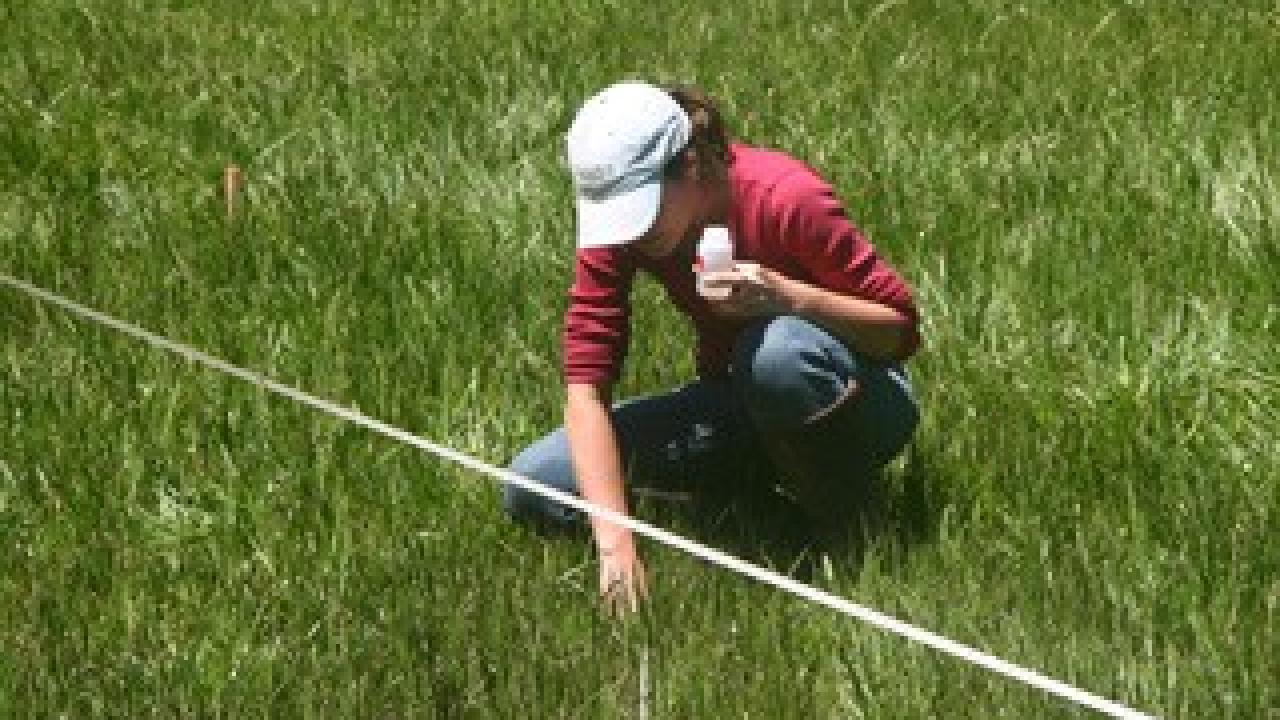
Cattle grazing and clean water are compatible on public lands, new study finds
Livestock grazing, public recreation, and clean water are compatible goals on national forest lands.
Postdoctoral scholar Leslie Roche takes a water sample from a meadow on a US Forest Service grazing allotment for her study on cattle grazing and water quality. (Kenneth Tate/UC Davis)
Cattle grazing and clean water can coexist on national forest lands, according to research by the University of California, Davis.
The study, published today in the journal PLOS ONE, is the most comprehensive examination of water quality on National Forest public grazing lands to date.
“There’s been a lot of concern about public lands and water quality, especially with cattle grazing,” said lead author Leslie Roche, a postdoctoral scholar in the UC Davis Department of Plant Sciences. “We’re able to show that livestock grazing, public recreation and the provisioning of clean water can be compatible goals.”
Roughly 1.8 million livestock graze on national forest lands in the western United States each year, the study said. In California, 500 active grazing allotments support 97,000 livestock across 8 million acres on 17 national forests.
“With an annual recreating population of over 26 million, California’s national forests are at the crossroad of a growing debate about the compatibility of livestock grazing with other activities dependent upon clean, safe water,” the study’s authors write.
“We often hear that livestock production isn’t compatible with environmental goals,” said principal investigator Kenneth Tate, a Cooperative Extension specialist in the UC Davis Department of Plant Sciences. “This helps to show that’s not absolutely true. There is no real evidence that we’re creating hot spots of human health risk with livestock grazing in these areas.”
The study was conducted in 2011, during the grazing and recreation season of June through November. Nearly 40 UC Davis researchers, ranchers, U.S. Department of Agriculture Forest Service staff and environmental stakeholders went out by foot and on horseback, hiking across meadows, along campsites, and down ravines to collect 743 water samples from 155 sites across five national forests in northern California.
These areas stretched from Klamath National Forest to Plumas, Tahoe, Stanislaus, and Shasta-Trinity national forests. They included key cattle grazing areas, recreational lands and places where neither cattle nor humans tend to wander.
UC Davis researchers analyzed the water samples for microbial and nutrient pollution, including fecal indicator bacteria, fecal coliform, E. coli, nitrogen and phosphorous.
The scientists found that recreation sites were the cleanest, with the lowest levels of fecal indicator bacteria. They found no significant differences in fecal indicator bacteria between grazing lands and areas without recreation or grazing. Overall, 83 percent of all sample sites and 95 percent of all water samples collected were below U.S. Environmental Protection Agency benchmarks for human health.
The study noted that several regional regulatory programs use different water quality standards for fecal bacteria. For instance, most of the study’s sample sites would exceed levels set by a more restrictive standard based on fecal coliform concentrations. However, the U.S. EPA states that E. coli are better indicators of fecal contamination and provide the most accurate assessment of water quality conditions and human health risks.
The study also found that all nutrient concentrations were at or below background levels, and no samples exceeded concentrations of ecological or human health concern.
The study was funded by the USDA Forest Service, Region 5.
About the College of Agricultural and Environmental Sciences
The College of Agricultural and Environmental Sciences at the University of California, Davis, is the leading college of its kind in the world. Its researchers address critical issues related to agriculture, food, the environment, communities, and human and social sciences through cutting-edge research, top-ranked undergraduate and graduate education, and internationally recognized outreach programs. An overarching goal is to develop solutions for a better world, healthier lives, and an improved standard of living for everyone. www.caes.ucdavis.edu
Additional information:
- Read the study http://www.plosone.org/article/info%3Adoi%2F10.1371%2Fjournal.pone.0068127
- Download photos of researchers in the field, cattle and the study area http://photos.ucdavis.edu/albums.php?albumId=245756
- Learn more about grazing and water quality http://rangelandwatersheds.ucdavis.edu/
Media contacts:
- Leslie Roche, UC Davis Plant Sciences, (530) 902-2547, lmroche@ucdavis.edu
- Kat Kerlin, UC Davis News Service, (530) 752-7704, kekerlin@ucdavis.edu